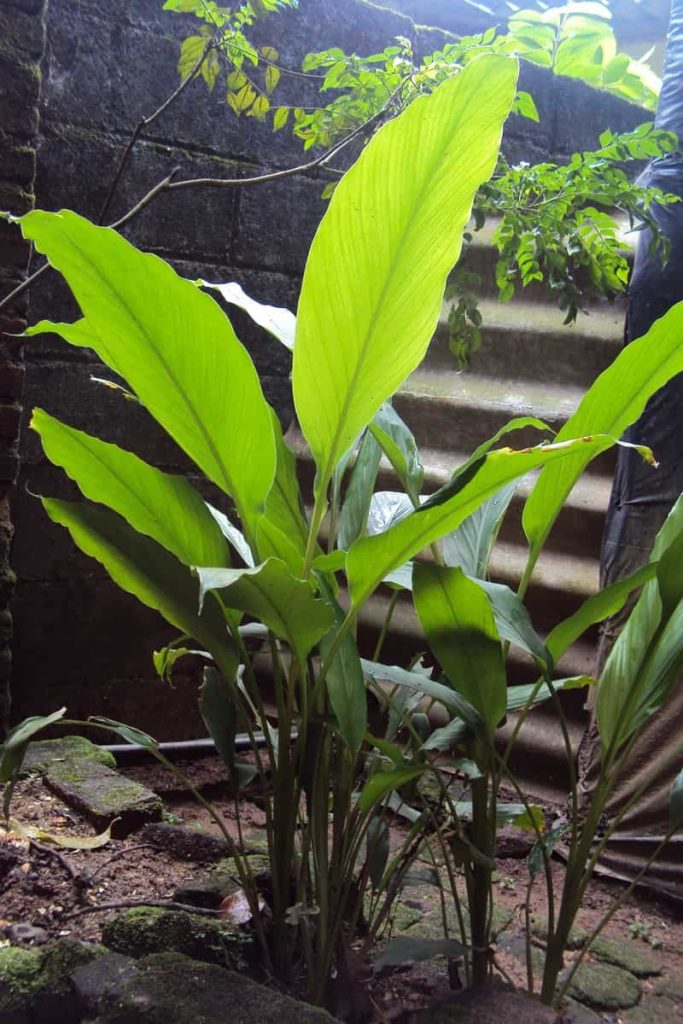Ginger is an important commercial crop grown for its aromatic rhizomes. It is an herbaceous perennial and botanically known as Zingiber officinale Rosc. Ginger rhizome is used as a spice. Ginger is a tropical crop in temperate climate regions such as the highlands.
Ginger farming business plan
Purpose of a business plan
It is essential to describe a strategy for starting or expanding an existing business by identifying where it is going and how it will get there to develop a business idea. As a result, feasibility can be tested, and the chances of obtaining funding can be maximized by achieving business goals and success.
A step-by-step process for Ginger farming for beginners
Site selection
For organic Ginger production is to leave a buffer zone of 25-50 feet around the conventional farm, depending on the farm’s location. Produce from this zone will not be considered organic. As Ginger is an annual crop, a conversion period of 2-3 years is required. Ginger can be grown organically as an intercrop or mixed crop with other crops, provided all other crops are grown organically. The site chosen should be well-drained and preferably in a field where Ginger has not been grown. Being a shade crop, Ginger can also be grown as an intercrop in gardens.
When to apply Ginger
Early spring is the best time to plant Ginger. It is a tropical plant that will grow year-round if you are in a warm climate. Ginger must be planted in a planter that can be brought inside during the colder months in cooler climates. Wait until after the first frost to plant your Ginger. The Ginger plant will take eight to ten months to mature and is best harvested in winter when the leaves begin to fall.
Soils suitable for growing Ginger
It thrives best in well-drained soils such as sandy loam, clay loam, red loam, or lateritic loam. A loose loam rich in humus with a pH of 6.0 to 6.5 is ideal. However, being an exhausting crop, it is not advisable to grow Ginger in the same soil year after year. Therefore, you will need to prepare the ground before planting. Solarizing the beds for 40 days using transparent polythene sheets is recommended in areas prone to rhizome rot disease and nematode infestations.
In case you missed it: Greenhouse Ginger Farming – A Full Planting Guide
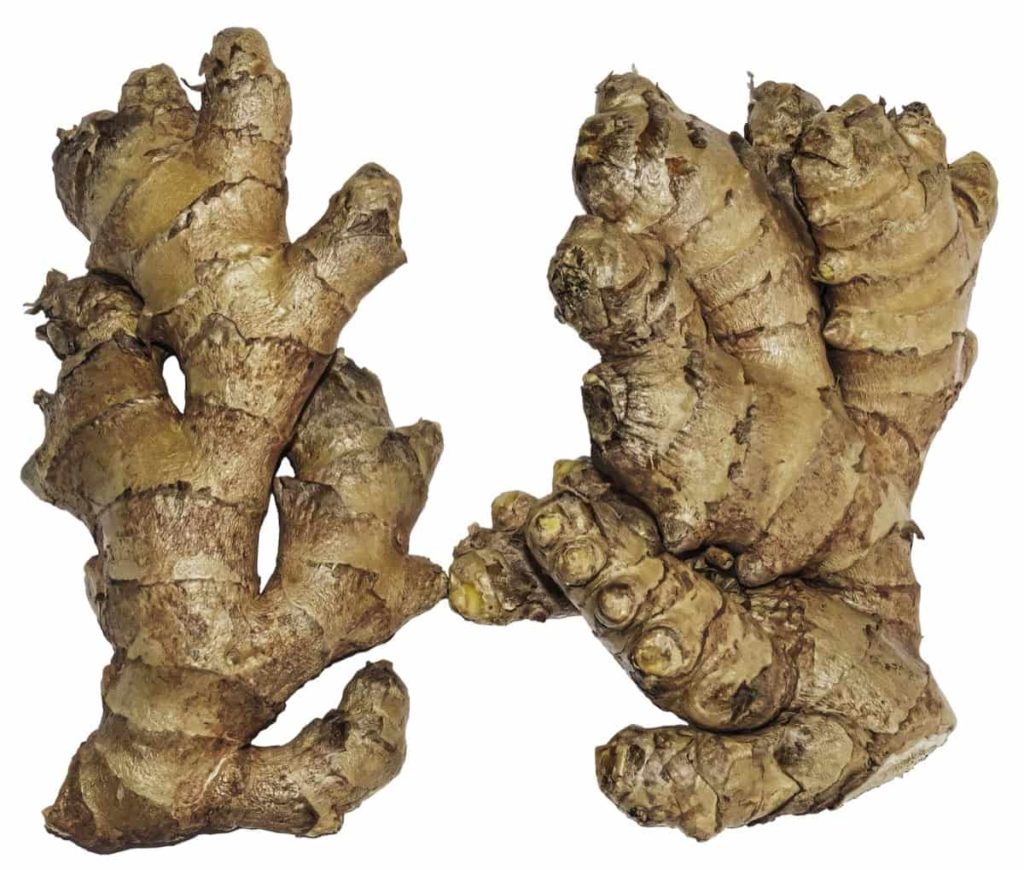
Preparation of Ginger cuttings
Ginger cuttings (old Ginger sprouts) can be cut only with specific cuttings under specific climatic conditions. In general, nursery Ginger cuttings do not help to achieve high-quality growth. Ginger cuttings, on the other hand, are either expensive or of poor quality if available. Ginger cuttings can be prepared at home using the same Ginger you want to grow. In rural areas, Ginger cuttings are produced by placing the Ginger in dark and moist areas for germination.
Transplantation technology for Ginger cultivation
Although transplantation in Ginger is not traditional, it is profitable. The grafting technique in Ginger has been standardized using single bud sprouts (about 5 g) to produce good quality planting material at a low cost. This technique involves growing transplants from single sprout seed rhizomes in pro-trays and planting them in the field after 30-40 days. The benefits of this technology are the production of healthy planting material, reduction in the number of seed rhizomes, and ultimately the cost of planting material.
Fertilization
Ginger takes a large number of nutrients. General fertilizer requirements are 180 kg/ha N, 180 kg/ha P205, and 255 kg/ha K2O. A fairly high K requirement makes Ginger susceptible to low K supply. One hectare of Ginger requires 11.5 bags of 14-14-14 and 4 bags of 0-0-60 plus 5 tonnes per hectare of chicken or animal manure. Apply compost during compost preparation and inorganic compost as a side dress 30 and 60 days after planting.
Irrigation
Ginger needs light but frequent irrigation during the vegetative stage if the rainfall is not evenly distributed. Depending on seasonal rainfall and soil type, irrigation varies from 4 to 7 days. If Ginger is planted in a rainfed area, nature will take care of the watering schedule. However, the soil should be checked regularly. It is essential to ensure that water does not accumulate in the soil. Too much water also causes wilting, affecting the final yield.
Weeding
Ginger usually requires regular hand weeding during its growth. Hand weed 1 month after planting. Later weed frequency depends on weed density. Mulch the plant using coconut leaves or rice straw to suppress weed growth.
Pest and disease management
Cutworms, scale insects, and aphids are common pests of Ginger, but they do not cause significant yield losses. Some major diseases are leaf spots, rhizome rot, and bacterial wilt. Ginger tolerates leaf spots. Rhizome rot can be prevented by applying sanitation and the application of Trichoderma as part of organic manure. During storage, separate healthy rhizomes from dull and discolored ones.
Bacterial wilt can be avoided by planting in areas prone to bacterial wilt. Then, remove and burn affected plants. Carefully preserved pest and disease-free seed rhizomes, collected from organically cultivated farms, can be used for planting. However, in the absence of organically produced seed, seed material of high-yielding local varieties can be used. The seed rhizome should not be treated with any chemicals.
In case you missed it: Ginger Diseases, Pests, Symptoms, And Control
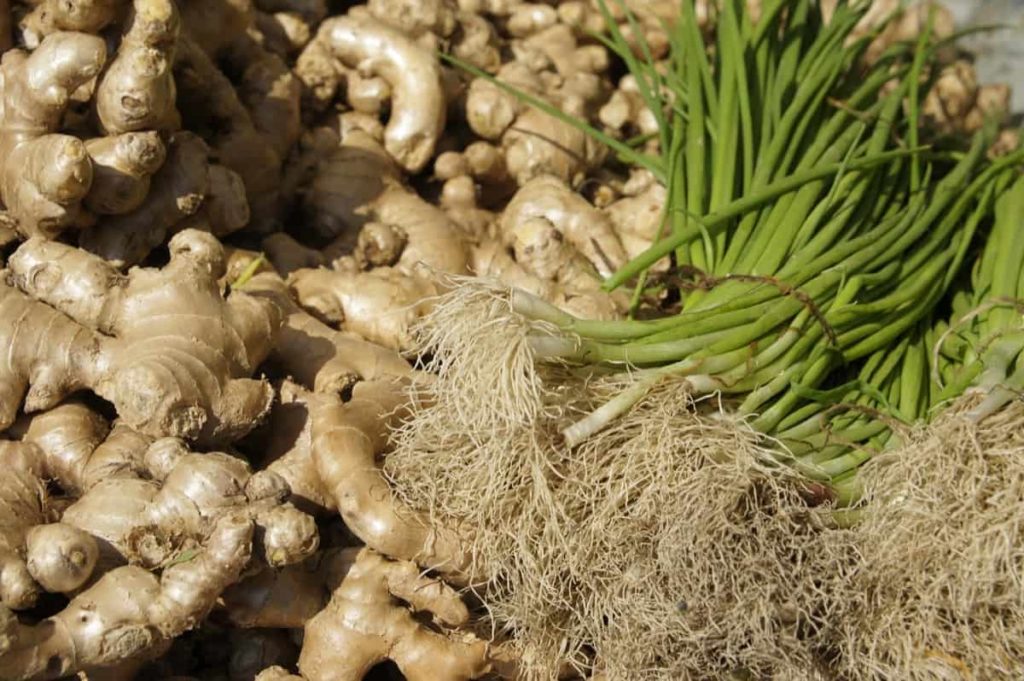
Points to be considered for starting a Ginger farming business plan for beginners
A Ginger farming business plan is the same, except that it caters to a specific type of business. Also, a Ginger farming business plan is a road map that helps you avoid any risks that always accompany running a business. The purpose of writing a Ginger farming business plan is to ensure that your business will not have to go through too many risks, no matter how you want it to go. You can also see that success and the steps you can take to grow it. A Ginger farming business plan aims to make it possible at the best possible time.
Step 1: Get a suitable farmland
Finding appropriate soil is very important when starting this farming business; you should also try to learn about the different types of soil and their characteristics to choose the best soil for planting. When choosing land for growing your Ginger, it is essential to consider the following: soil type, land topography, demographics, sunlight, and access to water.
For example, loam or humus soil is considered the best type of soil for planting Ginger because of its high nutrient content; it helps in Ginger’s proper growth. Of course, this farming can also be done at home if you have enough space. But the small or large area of land you need to start a farming business depends on the scale of your operation.
Step 2: Outline your Ginger farm business plan
Creating a business plan can be stressful enough already, so one of the best things you can do to reduce this problem is to start your own Ginger farming business. Firstly, start by outlining a business plan. From there, it will be easier for you to know where to start, how to start, and how to follow through with what you have written.
Step 3: Plan a budget ahead of time
Plan a financial budget when you plan to start a Ginger farming business as its financial part is also essential. Now is the best time to plan. Research the items you need to start this business.
Step 4: Get your start-up capital
There are a few methods you can raise your start-up capital. But if you have very little money, you can start it low-key and increase it when you start making a profit. If you plan to start it on a large scale, you should apply for a loan from the bank. Acquiring suitable land for this farming business will cost a lot; seeds are also expensive, and you will have to buy additional inputs like pesticides, fertilizers, irrigation systems, and others.
Step 5: Have a proper warehouse
You should have a proper warehouse or cold storage area to serve the important vegetables to your customers. Your warehouse should be clean, sanitary, and pest free. Remember, you’re selling perishables like vegetables, and your primary goal is to provide fresh food to your customers. If you fail to deliver fresh produce, customers may stop shopping at your online grocery store and leave unfavorable reviews.
In case you missed it: Ginger Farming Income (Adrak), Production Cost, Profit
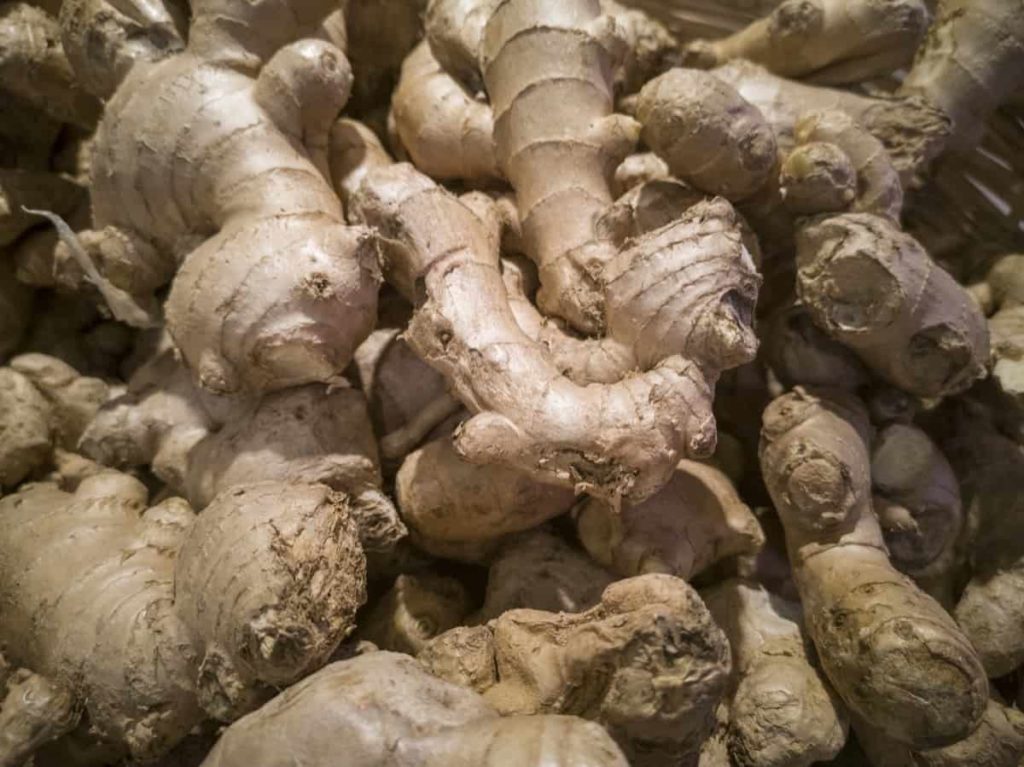
General care and maintenance tips for Ginger farming
- Ginger tends to grow horizontally, and the soil can be mounded around growing stems to encourage more vertical growth. The soil should be mulched 3 to 5 times during the growing season. Any exposed rhizomes should be covered with soil and weeds removed from the bed. Ginger will benefit from a complete fertilizer before planting and the addition of phosphorus, calcium, and organic matter.
- Additional compost can be added as a side dressing during the growing season. Side dressing should be done 25 to 30 cm (10-12 inches) from the plant row because fertilizer applications easily damage Ginger. Side dressing should be done every 2 to 3 weeks during the growing season to ensure adequate nutrient supply to Ginger.
- Ginger thrives in very fertile, well-drained soil to feed the Ginger plant. Using a high-quality commercial potting mix with organic matter is also recommended. The soil should have the ability to retain moisture and the ability to drain water so that the Ginger roots do not become waterlogged. If you use garden soil, mix garden soil with well-rotted compost for better root growth.
- Choose a fresh, healthy rhizome that has not been frozen, dried, or damaged. The bigger and thicker the rhizome, the better. Any rhizomes that are not fresh will not grow to produce healthy plants. It’s best to buy from a nursery or certified grower to ensure the rhizome is suitable for growing, but selecting the right one at the grocery store also offers a higher chance of success.
- You should water well but make sure the medium and container are free of water. When growing indoors, it may also be necessary to mist your plants to increase humidity levels. As your Ginger plant begins to bud and grow, it will be essential to water it regularly.
What makes Ginger such a profitable crop?
Ginger plays an important economic role as a medicinal plant, food flavoring, and dietary supplement. As a result, it is in demand throughout the year. It is the reason why Ginger farmers always get a good profit. Ginger marketing involves transferring the farmer’s fresh or processed product to consumers domestically and internationally. Therefore, different channels were involved in the transfer of different forms of Ginger from farmers to consumers.
Ginger farming practices for successful business
Organic production
Traditional varieties adapted to local soil and climatic conditions should be used for organic production that are resistant or tolerant to diseases, pests, and nematode infections. In addition, all crop residues and field wastes, such as green lopping, hay, cow dung slurry, chicken droppings, etc., can be recycled through composting, including vermicomposting, to increase soil fertility to a higher level to be maintained.
No synthetic chemical fertilizers, pesticides, or fungicides are allowed under organic systems. Farmyard manure @ 25-30 tonnes/hectare with vermicompost @ 4 tonnes/hectare and mulching with green leaves @ 12-15 tonnes/ hectare can be done at 45 days interval. Additionally, supplement oil cakes such as neem cake (2 tonnes/hectare), composted coir pith (5 tonnes/hectare), and appropriate microbial cultures of Azospirillum and phosphate solubilizing bacteria will improve fertility and yield.
In case you missed it: Ginger Cultivation Project Report, Farming Economics
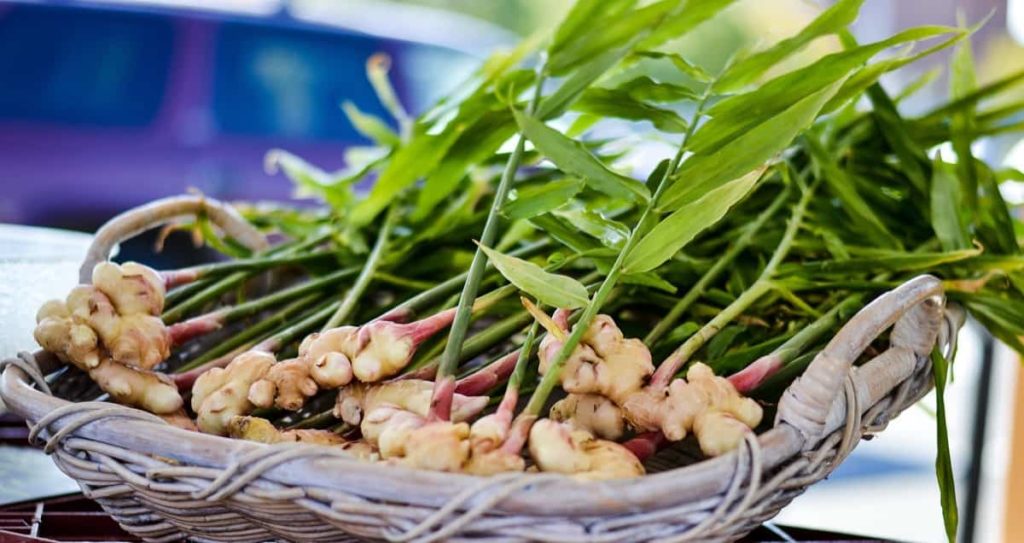
Vertical farming
Vertical farming is a method of farming on vertical surfaces or piles, usually rather than a field. It is the method of growing crops in vertically standing layers. This innovative idea uses indoor farming techniques. Vertical farming is almost identical to greenhouses. Most Ginger grown on vertical farms is grown with hydroponics. To grow Ginger on a vertical farm, plant a piece of Ginger rhizome in soil or compost until the roots grow.
Then transfer it to the hydroponic system. Before planting Ginger in a vertical system, you should cut the rhizomes into small pieces and plant them in soil or, ideally, compost. Wait for the rhizomes to grow, and once you see green stems coming out of the ground, you can transfer the Ginger to your vertical hydroponic or aquaponic system. You will need some growing media to hold the rhizome in place.
The most common media used for rooting plants is expanded clay, such as Ginger. To plant Ginger in growing media, dig a hole in the soil and insert a rhizome. Ginger likes warm and humid climates, so ideally, keep your air temperature above 35°C. Water temperature should be in the range of 24-26°C.
Tips for growing Ginger faster
- Make sure the soil is loose enough for Ginger roots to grow quickly. Then, check the growth and health of the Ginger root after two or three months. If they are not growing as you expected, taste the soil. And Ginger is very dependent on fertilizer.
- During the growing stage, it requires reasonably heavy and well-distributed rainfall. Ginger needs 2-5 hours of sunlight then direct sunlight is harmful; it may be easier to use shade during hot afternoons. And always weed before fertilizing and mulching.
- You don’t want to fertilize unwanted plants. When the soil is dry, water is expected to keep the soil moist, but do not water during the mourning period.
- It should be reduced during the winter while the plant is dormant and continued at the onset of spring which helps to make Ginger healthy.
- Strong winds or poorly drained loam can cause stunted or distorted Ginger roots.
- It also needs moderate rainfall during the rooting period, and the environment should be dry during the last 4-5 weeks before planting.
In case you missed it: Ginger Farming Techniques In Container Gardening
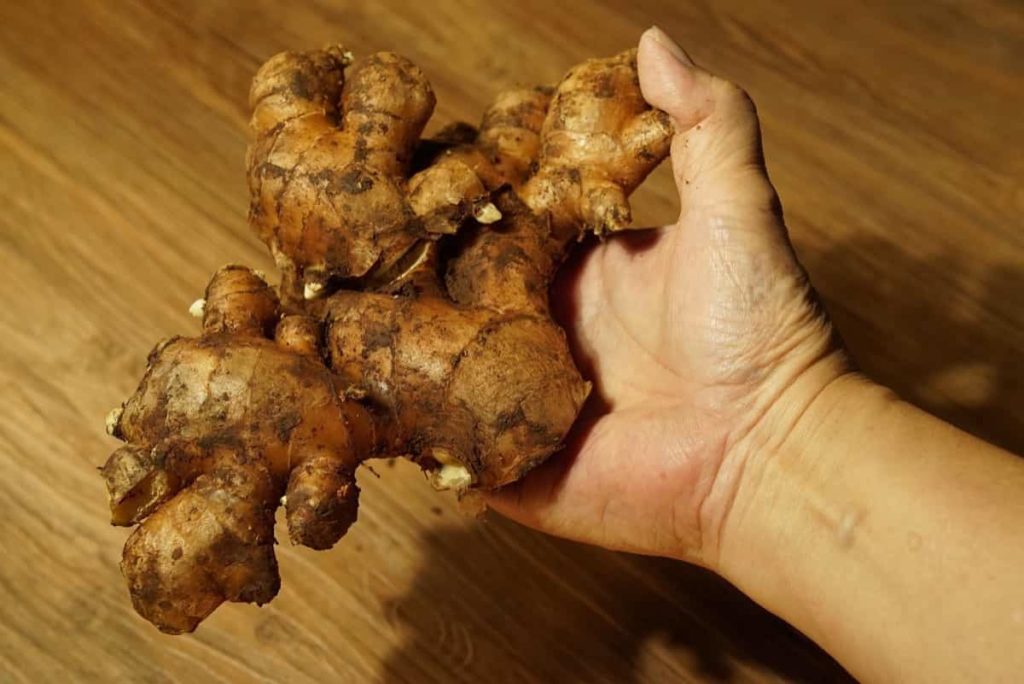
Yield and profit analysis in the Ginger farming business
For successful crop cultivation, moderate rainfall at the time of sowing, until the rhizomes sprout, sufficiently heavy and good Distributed rainfall, and a dry season of about a month before harvest is essential. A Ginger crop may take 8 to 9 months to mature. The yield of Ginger is 150 to 200 quintals per hectare. Therefore, Ginger cultivation can cost around Rs. 7-8 lakh per hectare. Ginger is sold at approximately Rs. 60 to 80 per kg; if the lower range at Rs. 60 per kg, 1 hectare of land can easily earn Rs. 9 lakh.
Conclusion
Ginger grows best in well-drained loamy loam soil. Being an exhaustive crop, it may not be suitable to grow Ginger in the same field year after year. Therefore, it is essential to convert the entire farm organically with Ginger as one of the crops in rotation. A Ginger farming business plan is a type of strategic plan that caters to Ginger farming. This business plan helps you by giving you different ways to help make your Ginger farming business successful.
- How to Make Houseplants Bushy: Effective Tips and Ideas
- Innovative Strategies for Boosting Coconut Pollination and Yield
- Pollination Strategies for Maximum Pumpkin Yield
- The Complete Guide to Chicken Fattening: Strategies for Maximum Growth
- Natural Solutions for Tulip Problems: 100% Effective Remedies for Leaf and Bulb-Related Issues
- Revolutionizing Citrus Preservation: Towards a Healthier, Greener Future
- Natural Solutions for Peony Leaf and Flower Problems: 100% Effective Remedies
- Maximizing Profits with Avocado Contract Farming in India: A Comprehensive Guide
- Natural Solutions for Hydrangea Problems: 100% Effective Remedies for Leaf and Flowers
- The Ultimate Guide to Choosing the Perfect Foliage Friend: Bringing Life Indoors
- From Sunlight to Sustainability: 15 Ways to Use Solar Technology in Agriculture
- The Ultimate Guide to Dong Tao Chicken: Exploring from History to Raising
- The Eco-Friendly Makeover: How to Convert Your Unused Swimming Pool into a Fish Pond
- Mastering the Art of Delaware Chicken Farming: Essentials for Healthy Backyard Flocks
- 20 Best Homemade Fertilizers for Money Plant: DIY Recipes and Application Methods
- How to Craft a Comprehensive Free-Range Chicken Farming Business Plan
- Brighten Your Flock: Raising Easter Egger Chickens for Beauty and Bounty
- How to Optimize Your Poultry Egg Farm Business Plan with These Strategies
- Subsidy for Spirulina Cultivation: How Indian Government Schemes Encouraging Spirulina Farmers
- Ultimate Guide to Raising Dominique Chickens: Breeding, Feeding, Egg-Production, and Care
- Mastering the Art of Raising Jersey Giant Chickens: Care, Feeding, and More
- Ultimate Guide to Raising Legbar Chickens: Breeding, Farming Practices, Diet, Egg-Production
- How to Raise Welsummer Chickens: A Comprehensive Guide for Beginners
- How to Protect Indoor Plants in Winter: A Comprehensive Guide
- Ultimate Guide to Grow Bag Gardening: Tips, Tricks, and Planting Ideas for Urban Gardeners
- Guide to Lotus Cultivation: How to Propagate, Plant, Grow, Care, Cost, and Profit
- Agriculture Drone Subsidy Scheme: Government Kisan Subsidy, License, and How to Apply Online
- Ultimate Guide to Raising Araucana Chickens: Breed Profile, Farming Economics, Diet, and Care
- Bringing Hydroponics to Classroom: Importance, Benefits of Learning for School Students
- Ultimate Guide to Raising Polish Chickens: Breed Profile, Farming Economics, Diet, and Care
- Ultimate Guide to Raising Australorp Chickens: Profile, Farming Economics, Egg Production, Diet, and Care
- Silkie Chicken Farming: Raising Practices, Varieties, Egg Production, Diet, and Care
- Sussex Chicken Farming: Raising Practices, Varieties, Egg Production, Diet and Care
- Homemade Feed Formulations for Livestock: Discover Cost-effective Starter to Finisher Feed Recipes
- 20 Best Pig Weight Gain Supplements: Top Swine Weight Gain Formulas
- Ultimate Guide to Elderberry Farming: Propagation, Planting, Yield, Cost, and Profit
